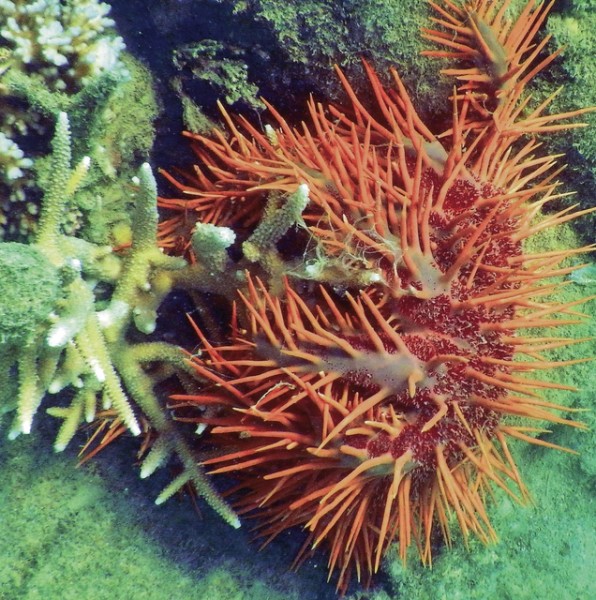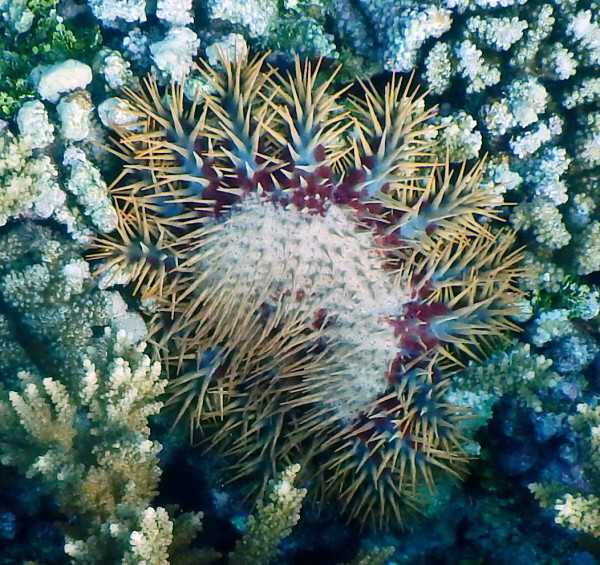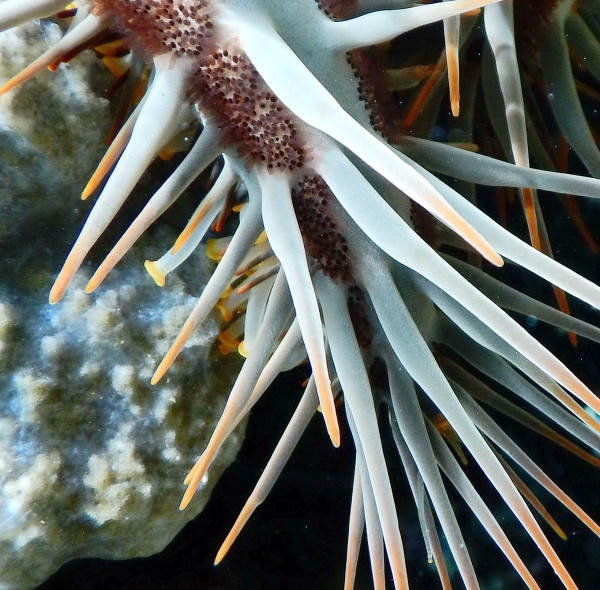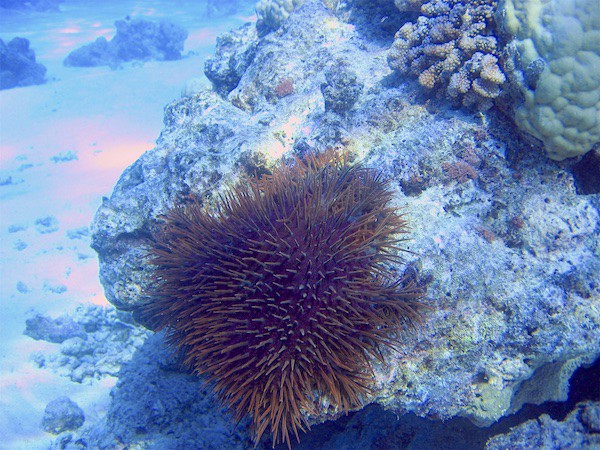Published in the Ocean Watch column, Honolulu Star-Advertiser © Susan Scott
February 1, 2016

Published February 1, 2015 in the “Ocean Watch” column, Honolulu Star-Advertiser ©2015 Susan Scott
‘If I see one in an area, I leave it,” a knowledgeable Palauan dive guide told me recently. “But if there’s two or more, I kill them.”
This was the reply to my query about whether crown-of-thorns starfish have been a problem on reefs in Palau. The guide’s explanation didn’t answer my question, but it made clear one fact: Most people see the crown-of-thorns starfish as a coral killer that deserves the death penalty.
 Crown of thorns.
Crown of thorns.
©2015 Susan Scott
But before giving this native Indo-Pacific reef animal a lethal injection, we should consider the 1,200 observations on the subject. That’s the approximate number of crown-of-thorns-starfish-related research papers published, most since the 1960s and ’70s outbreak that devastated Australia’s Great Barrier Reef.
Because that amount of data is so large, it’s been hard to ferret out the facts. So workers from James Cook University joined workers with the Australian Institute of Marine Science to consolidate the studies. Their resulting 2014 report draws only one sobering conclusion: “Many questions about the biology of (the species) remain unanswered, which greatly limits the understanding and hence the potential to manage outbreaks.”
The recent study of studies, however, did answer one question: Do the starfish search out a particular kind of coral or go for whatever is in their paths?
 Crown of thorns close-up.
Crown of thorns close-up.
©2015 Susan Scott
Both, it turns out, an answer that shows the difficulties researchers have in learning about the starfish and planning its management.
According to seven studies across the Pacific, given a choice, the starfish have, by far, two favorites: rice coral (Montipora) and plate and staghorn coral (Acropora). Although Hawaii has several species of both types, the starfish hasn’t caused much damage here.
If not given a choice, however, such as when corals are scarce and the creatures are starving, they’ll eat any and all corals they can find.
One fact I know about these giant (18 inches across) starfish that wasn’t mentioned in the 2014 report is that they’re beautiful. The color variations are endless, but often the tops of the bodies bear circles of green, red and blue; and the spikes that rise from them often have orange or purple bands. And on its thousands of fat tube feet below, the creature wears pretty yellow socks.
Like sharks and jellyfish, myths about crown-of-thorns starfish live on. And also like sharks and jellyfish, these native species have vital roles in the health of coral reefs. Until scientists know what causes the crown-of-thorns starfish to out-reproduce their coral resources, we should grant the creatures parole.
 Crown of Thorns.
Crown of Thorns.
Courtesy Scott R. Davis